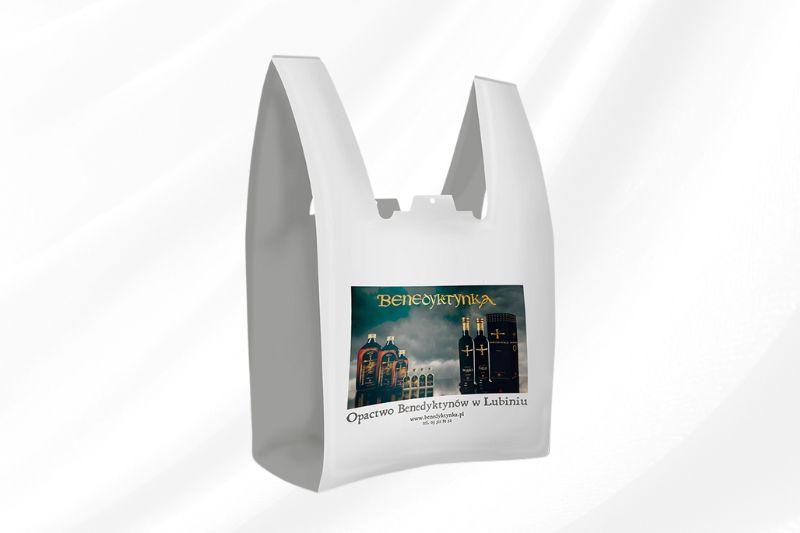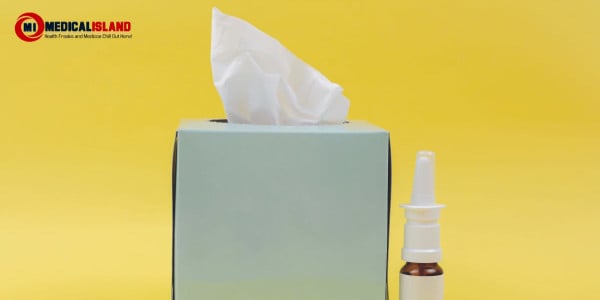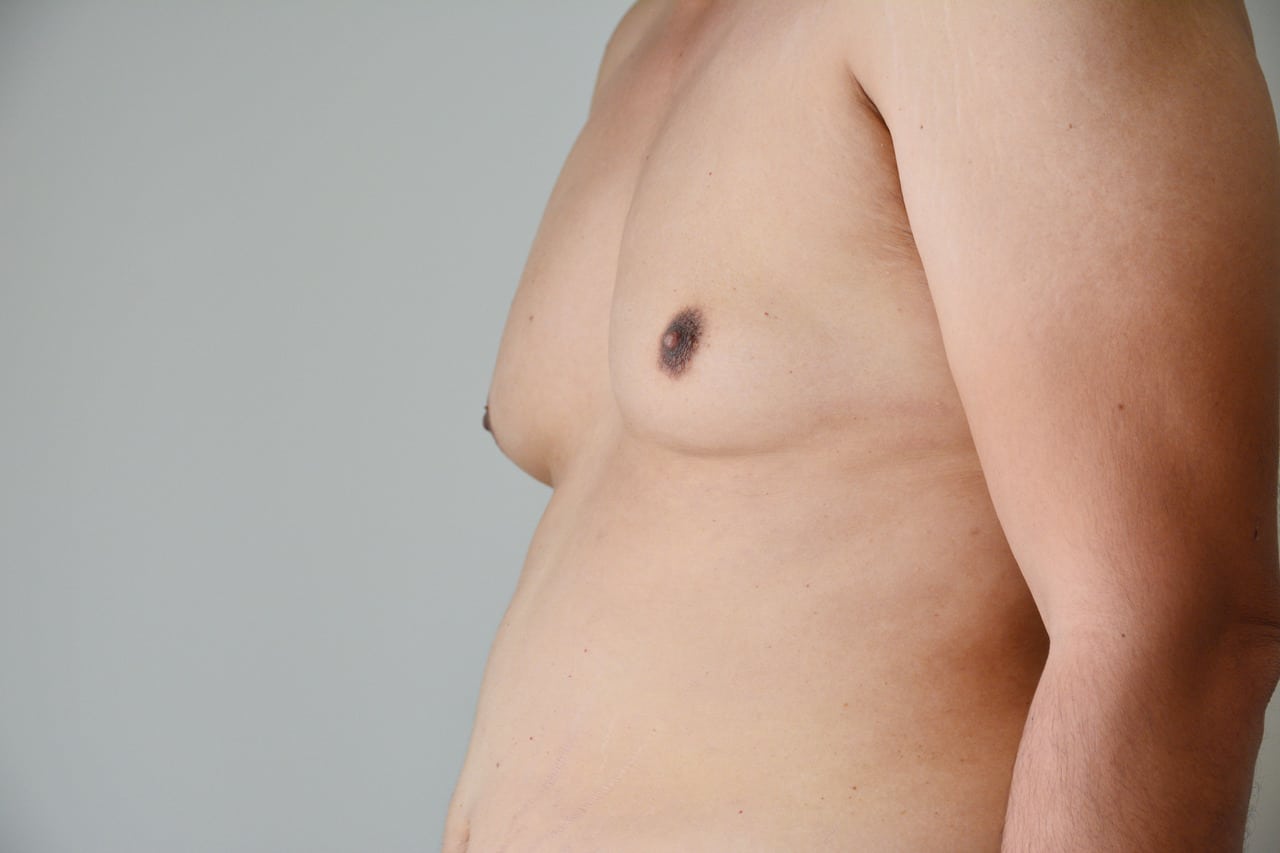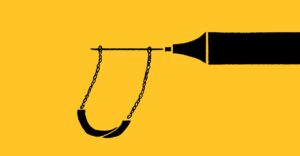

Szczepionki dla najmniejszych dzieci już się nie sprawdziły
Updated at 11:28 a.m. on June 9, 2022
When Kishana Taylor enrolled her 3-year-old son, John, in preschool last fall, she figured COVID-19 immunizations for kids under-5 would arrive before the start of classes. Since then, she has delivered fraternal twins, now almost six months old—and there are still no vaccines for her kids. After John caught the coronavirus, he and his siblings had to duel the virus entirely unprotected, a reality that Taylor, a virologist at Rutgers University, never wanted them to face. “The only reason we put John in public school was because I thought he was getting a vaccine,” she told me. “I would have made different decisions, if we had known it was going to be put off this long.”
Next week, the FDA and CDC are expected to finally, finally green-light two vaccines for kids under 5—a milestone that millions of parents have been waiting for since their own adult shots came through. But reality won’t match the vision many once had of this moment.
Closer to the pandemic’s start, when the vaccines were fresh and inoculation lines still stretched impossibly long, an idealized version of herd immunity still seemed possible; maybe, just maybe, vaccinating some 60 to 90 percent of Americans—including a hefty fraction of the nation’s 74 million kids—would quash the outbreak for good. “When we talked to parents last year, I think there was a perception that it would be over by now,” says Jessica Calarco, a sociologist at Indiana University. It is, of course, not over by now.
Read: Don’t wait to get your kid vaccinated
For months, the number of Americans who opted for their initial doses has held at just above 250 million, or about 79 percent of the population. And those numbers are unlikely to budge: A recent Kaiser Family Foundation poll found that less than a fifth of parents are eager to vaccinate their infants and toddlers right away, with the rest unsure about the shots or outright opposed. “I’m usually a much more positive person, but I don’t believe this is going to change much,” says Robin Cogan, a school nurse in New Jersey’s Camden City School District.
During the delays in rolling out COVID vaccines for infants and toddlers, doubts about the shots ballooned, and misinformation seeped into data gaps. Parents watched SARS-CoV-2 hopscotch through their families. Now nearly all other mitigation measures—along with much of the fear and social incentives that nudged many adults to sign up for shots—have vanished. “Parents are feeling like, if my kids don’t need to be vaccinated in order to go back to school, back to child care, then what’s the point?” Calarco said. The opening up of American society in advance of these vaccines sent a message: The youngest children don’t need to be immunized for things to be all good.
Infant-and-toddler vaccination is now manifesting as yet another symptom of the U.S.’s hyper-individualistic approach to crisis containment. Wear a mask or don’t; nab a shot or don’t. Vaccinating the youngest kids will change many little lives. But with so many weights stacked against pediatric vaccination, America will struggle to eke out its biggest benefits for the population at large.
The primary perk of getting a COVID vaccine is still simple. The shots “help the body do its thing faster,” says Nathan Chomilo, a pediatrician and health-equity advocate in Minnesota: speeding the process of booting the bug, shortening symptoms, and keeping them from turning severe. Vaccinated kids are more spared the tolls of debilitating and deadly disease, such as long COVID, MIS-C, and more.
Children can also easily contract the coronavirus and spread it around; “if we’re even halving the amount of kid-prompted transmission we’re having, it’s going to make a substantial difference in day-to-day life,” says Emily Martin, an infectious-disease epidemiologist at the University of Michigan. Vaccinated children would be less likely to infect parents, siblings, and grandparents, who would be less likely to be pulled out of work and risk losing income. Schools and daycares would be safer, and entire neighborhoods would be better buffered against future outbreaks.
Such a rosy scenario won’t play out everywhere. “We’re going to see a separation of communities,” Martin told me, exacerbating existing disparities. Uptake has lagged spectacularly in other age groups: Only 60 percent of 12-to-17-year-olds, and 29 percent of 5-to-11-year-olds, have gotten their first duo of doses. “It seems like the younger the kids are, the more hesitant parents have been,” says Lanre Falusi, a pediatrician at Children’s National Hospital in Washington, D.C.
Which means that places that struggle to muster support for shots will also likely maintain the status quo of having teachers and parents constantly out sick, exposed to gobs of virus, or caring for ill children, many of them too young to mask or isolate. Spread, too, will further surge. “The household is really where the activity is” when it comes to viral spread, Martin told me. To have the youngest kids “stay our susceptible group will continue to drive infection into the rest of the family.”
Read: Why a three-dose vaccine for kids might actually work out
Martin, for one, is “not completely pessimistic about uptake” in the youngest age group. Kids under 5 are tightly tethered to the pediatrician, and in that alone, “there’s this regular structure,” she told me, including a trusted expert to advise decisions on immunization. Vaccination for kids this little is already a norm. Even flu shots, which in most parts of the country aren’t required to start school, are more popular among infants and toddlers than they are among adults under the age of 65.
But while “a lot of my families trust other vaccines on the traditional vaccine schedule,” they’re skeptical of COVID vaccines, says Sanjeev Sriram, a pediatrician in Maryland, where he treats a predominantly low-income, Black, and Latino patient population. Some parents are vaccinated against COVID and still balk at dosing their young kids with a shot hurtled through a program nicknamed “Warp Speed”—which, Sriram told me, sounds like a euphemism for unvetted and totally rushed. The vaccine—marketed as free and ultra-effective—also feels like a suspicious departure from many of his patients’ typical experiences with health care. “They’re like, ‘Where were you with the free, helpful stuff before?’” Sriram said, as if families are worried there’s a catch.
With time, the conversations have only gotten more fraught. Suresh Boppana, a pediatric infectious-disease specialist in Alabama, the state with the lowest rate of COVID vaccine uptake among 5-to-11-year-olds, told me that, in some cases, the families he works with—even some of his colleagues—are so against vaccinating their kids that they refuse to partake in discussions at all. “They just don’t even want to engage,” he told me.
To one way of thinking, the time it’s taken to authorize these vaccines should signal their solidity. The COVID vaccines have been safe in every age group tested, including infants and toddlers, who receive smaller doses to minimize side effects. “We have a year and a half of data from adult and now adolescent vaccines to show it’s safe,” Falusi told me. But that time also left a gap for misinformation and disillusionment to creep in, and seize on parents’ fears.
Pediatricians across the country told me that they still regularly receive questions about whether the vaccines could make their kids infertile (no), implant microchips (no), magnetize their children (no), or were part of a conspiratorial government plot (no). The shots have also become hyper-politicized. “That’s been one of the hardest things,” says Gilbert Goliath, a pediatrician based in West Virginia, a state with one of the lowest rates of pediatric-COVID-vaccine uptake in the country. “Hopefully,” he told me, when it comes time for parents to vaccinate their infants and toddlers, “they’ll listen to me.”
Parents have also grown disillusioned over pediatric shots after watching adult friends and family get vaccinated, then contract COVID anyway. Reports of postvaccination illnesses, hospitalizations, and deaths have made it seem as though the shots have lost their luster. “They’re like, What’s the point when it doesn’t seem like they work anyway?” Cogan told me.
That incorrect assumption, compounded with misinformed notions that COVID’s no worse than a “bad cold,” especially for kids, have made risk-benefit conversations especially tough to have. Recent estimates of the proportion of American children who have been infected by SARS-CoV-2—some 75 percent by February, according to a CDC study—also planted false ideas that COVID-recovered kids “don’t need to get vaccinated,” says Anne Sosin, a public-health researcher at Dartmouth College.
In reality, vaccines do reduce the chances of bad outcomes, and immensely improve upon the defenses left behind by infections. (For that reason, Taylor, the Rutgers virologist, remains eager to vaccinate all three of her recently infected kids.) And infected children do die from COVID; they do develop severe inflammatory conditions, such as MIS-C; they do suffer the chronic symptoms of long COVID. Low levels of population-level immunity have also dragged the pandemic on, wreaking havoc on kids’ mental health. “The amount of mental health I’ve treated in the past two years has surpassed my previous 28 years,” Goliath told me.
Read: Why kids’ COVID vaccine results don’t look like adults’
And yet, the kids are okay has been “a big part of the messaging” for more than two years, Calarco told me, and was especially tantalizing “for parents of young children, who are heavily reliant on child care and schooling.” This narrative has been that much more appealing as of late, as the U.S. has hurtled back toward reopening in full. “There is a general feeling that people tend to feel, like the pandemic is over,” Falusi told me, and few parents who have adopted that mindset want any reminders that it is still around.
The signs of COVID’s coda are, after all, everywhere: Masks are all but gone; in-person meetings are back; travel is bumping; end-of-spring gatherings are in full swing. All of that has reinforced the idea that infant-and-toddler vaccines just aren’t necessary for normal life to resume. The delays and bungled messaging from Pfizer about its under-5 shot didn’t help; nor did the sluggish submission and review of the data out of Moderna’s under-6 clinical trials.
Now that shots sized for the littlest kids are finally poised to drop, much of the motivation is sapped, and will be very difficult to reclaim. “As things open up, vaccination has gone to the back burner, especially in communities that are under-resourced,” Chomilo told me. “Can I put food on the table?” takes precedence over “Can I get my kid their shot?” Community immunization sites have disappeared, removing visible reminders of the shots’ importance, and stripping access from families who might have nowhere else to seek a shot. And although the Trump administration greenlit pharmacies to vaccinate kids as young as 3, federal leaders have yet to do the same for littler children, and many states do not permit it.
That puts a big burden on pediatricians’ offices, where supply may not be guaranteed, and could be imperiled when skilled staff call out sick. For some children, “it might be a few months, or even a year, before they’re back in a doctor’s office,” Chomilo said. A late-June rollout also misses the end of the school year, removing the opportunity for children and parents to hear enthusiastic messaging about the shots from teachers and nurses. There’s an irony to it, Martin told me: In other outbreaks, there have been calls to prioritize getting protection to the littlest kids first, “because they’re the super-spreaders, then you catch up the adults.”
There will be no simple solutions here. Financial incentives could help. School mandates, too, are an effective way to get immunization rates up, though in recent months, several states have introduced legislation to ban such measures. But the biggest and most difficult change will be cultural: repairing parents’ relationships to immunizations, and making COVID shots a little-kid routine. Every person I spoke with for this story stressed the importance of community outreach, and one-on-one conversations, starting with pediatricians, many families’ most reliable touchstone for care.
It can work. Puerto Rico, which has one of the highest immunization rates in the entire country, also leads the U.S. in uptake of kids’ COVID shots—a trend that experts such as Mariola Rivera Reyes, a pediatric pulmonologist, attributes to the territory’s strong sense of community and trust in local leaders. “Almost all the parents I’ve talked to have been very enthusiastic,” said Rivera Reyes, who has taken to social media to connect with parents. “We haven’t encountered the resistance we can see in the mainland.”
Maybe, with cases, hospitalizations, and deaths once again rising in many parts of the country, more parents will feel urgency to act. Sriram saw concern bump up during the winter wave of the original Omicron variant, BA.1, which dragged vaccine uptake in lockstep. “They felt like, This is coming for the kids now,” he told me. “It was a wake-up call.” But as of late, the dial has reset. “We’re back to ‘wait and see’ mode.” This time around, Sriram is far less sure what, exactly, parents are waiting and looking for.





